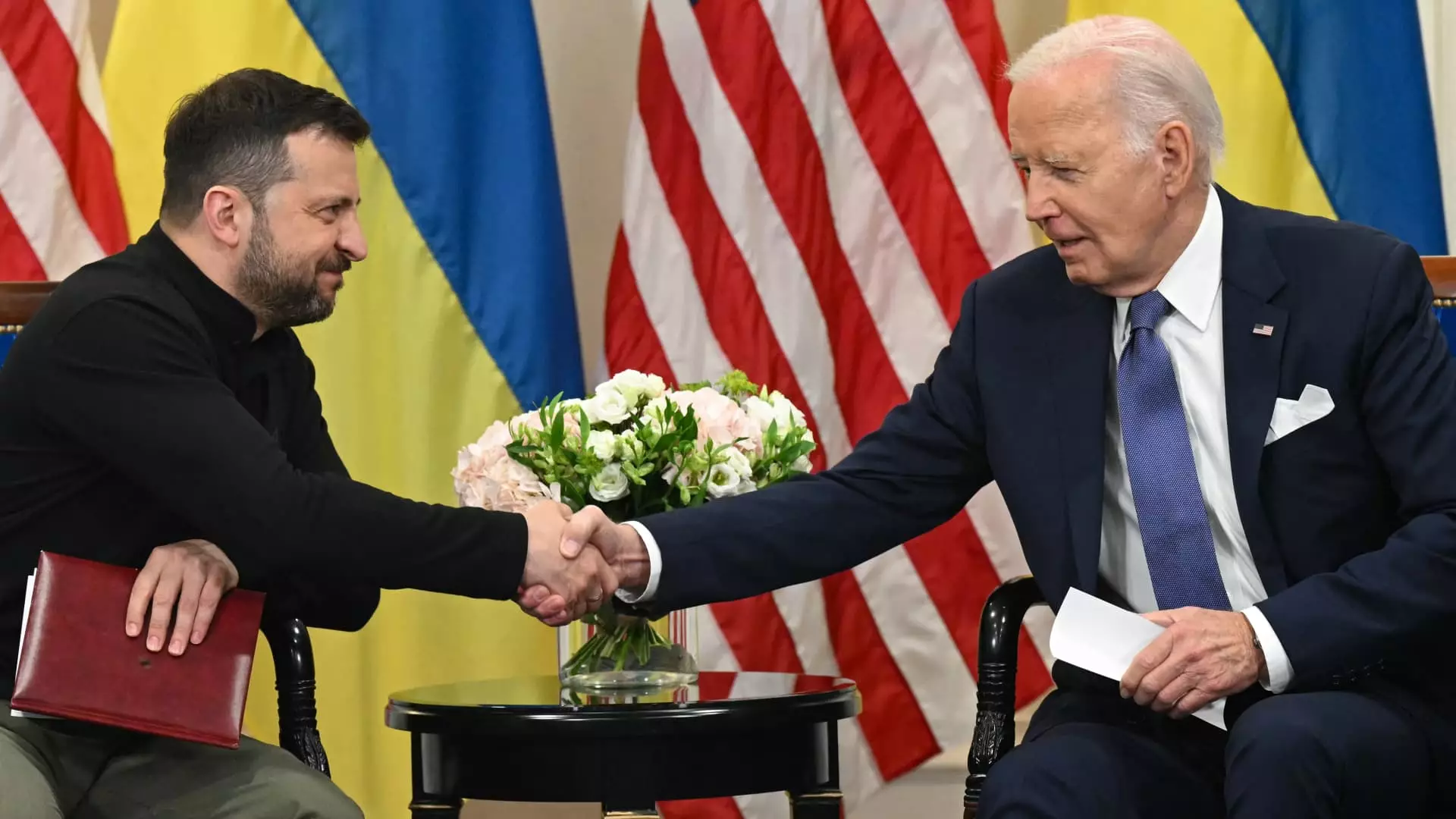The geopolitical landscape of Eastern Europe is under intense scrutiny as the conflict in Ukraine persists. The recent announcement by the United States, detailing nearly $6 billion in additional military and budget assistance for Ukraine, comes at a critical juncture. As President Biden utilizes the last weeks of his administration to fortify Ukraine’s efforts against Russian aggression, the implications of this support are significant for both nations.
On Monday, President Biden revealed a two-pronged approach to supporting Ukraine: $2.5 billion dedicated to security assistance and an additional $3.4 billion categorized as budget aid. This move is strategic, aiming to bolster Ukraine’s military capabilities while ensuring that its government continues to function amidst ongoing hostilities. With Russian forces increasing their attacks on civilian structures and infrastructure, the urgency of U.S. assistance cannot be overstated.
The $2.5 billion in military assistance is noteworthy as it comprises substantial provisions drawn from U.S. stockpiles, including $1.25 billion, alongside a $1.22 billion aid package known as the Ukraine Security Assistance Initiative (USAI). This initiative deviates from traditional methods by procuring equipment directly from defense contractors rather than leveraging pre-existing stock, indicating a shift towards long-term logistical support in Ukraine’s fight against external aggression.
Treasury Secretary Janet Yellen’s announcement regarding $3.4 billion in budget aid highlights an essential dimension of U.S. support: the maintenance of Ukraine’s governance and public services. Since the onset of the conflict, U.S. budget aid has amounted to over $30 billion. These funds primarily facilitate the operation of essential services such as education and healthcare, ensuring continued payment to state employees amid the financial strains caused by war. Such economic stability is pivotal for a nation grappling with both military and humanitarian challenges.
Despite significant financial backing, the future of U.S. aid under the impending Trump administration raises questions. Trump’s previous statements regarding the necessity for European allies to assume a more considerable share of the financial burden suggest potential shifts in policy that could impact Ukraine’s access to critical support.
In recent developments, the utilization of North Korean troops by Russia signals a perplexing evolution in the conflict. Reports of devastating casualties on the frontlines highlight the grim realities soldiers face and, interestingly, the involvement of North Korean forces adds layers of complexity to the conflict. The fact that 1,000 troops were reportedly killed or wounded in a single week raises pressing questions about the sustainability of Russia’s military strategies as it struggles to maintain control in contested areas.
As Biden optimistically proclaimed that the latest influx of U.S. assistance would provide Ukraine with essential “capabilities” to enhance its battlefield effectiveness, the dynamics of war are continually shifting. With winter approaching, the need for strategic military supplies such as air defense systems and artillery has never been more crucial. The Defense Department’s commitment to delivering vast amounts of military hardware reflects a response to those needs, yet the uncertainty surrounding the continuity of this support looms large.
The comprehensive assistance from the United States, amounting to approximately $61.4 billion in security resources since the war’s commencement, underscores an enduring commitment to Ukraine’s sovereignty. However, as the political landscape shifts with the upcoming change in administration, the question of whether this dedication will persist is paramount. Republican leadership in Congress has shown mixed sentiments towards ongoing financial support, and upcoming discussions will undoubtedly shape Ukraine’s path forward.
Economic stability and military preparedness are intertwined in Ukraine’s fight for sovereignty, and leaders like Yellen emphasize that helping Ukraine achieve success is aligned with U.S. national interests. To navigate the complex realities of this conflict, sustained commitment and adaptability will be crucial in ensuring that Ukraine remains resilient against aggression and capable of negotiating for peace in the future.
The infusion of military and budget assistance represents more than mere financial aid; it is a decisive element in the broader strategy to confront authoritarianism and support democratic governance amidst unprecedented challenges. The coming months will reveal much about the resilience of Ukraine and the extent of international support amidst evolving geopolitical dynamics.

